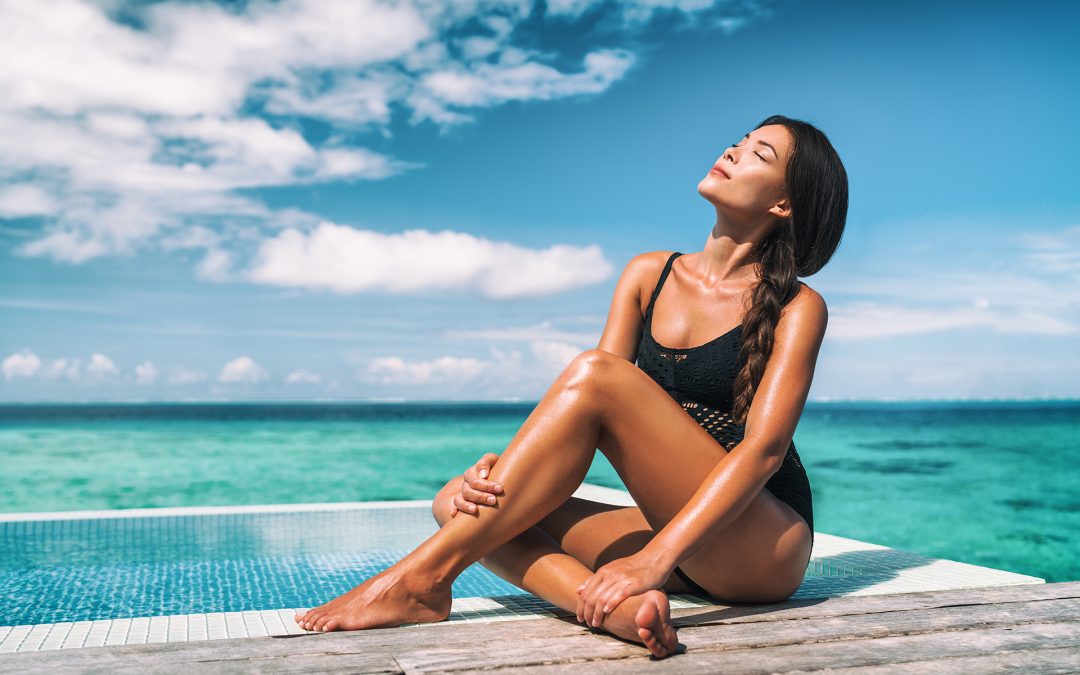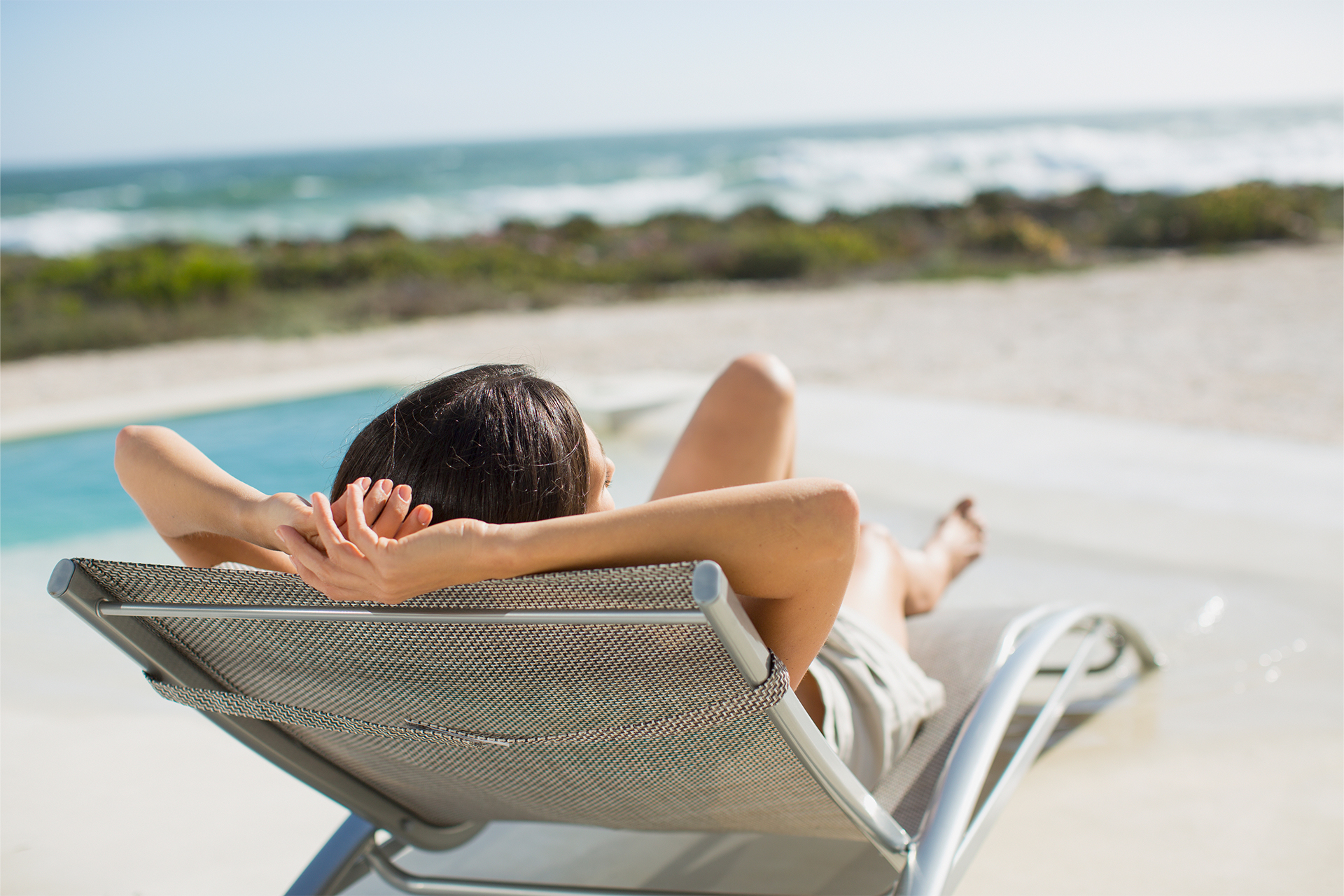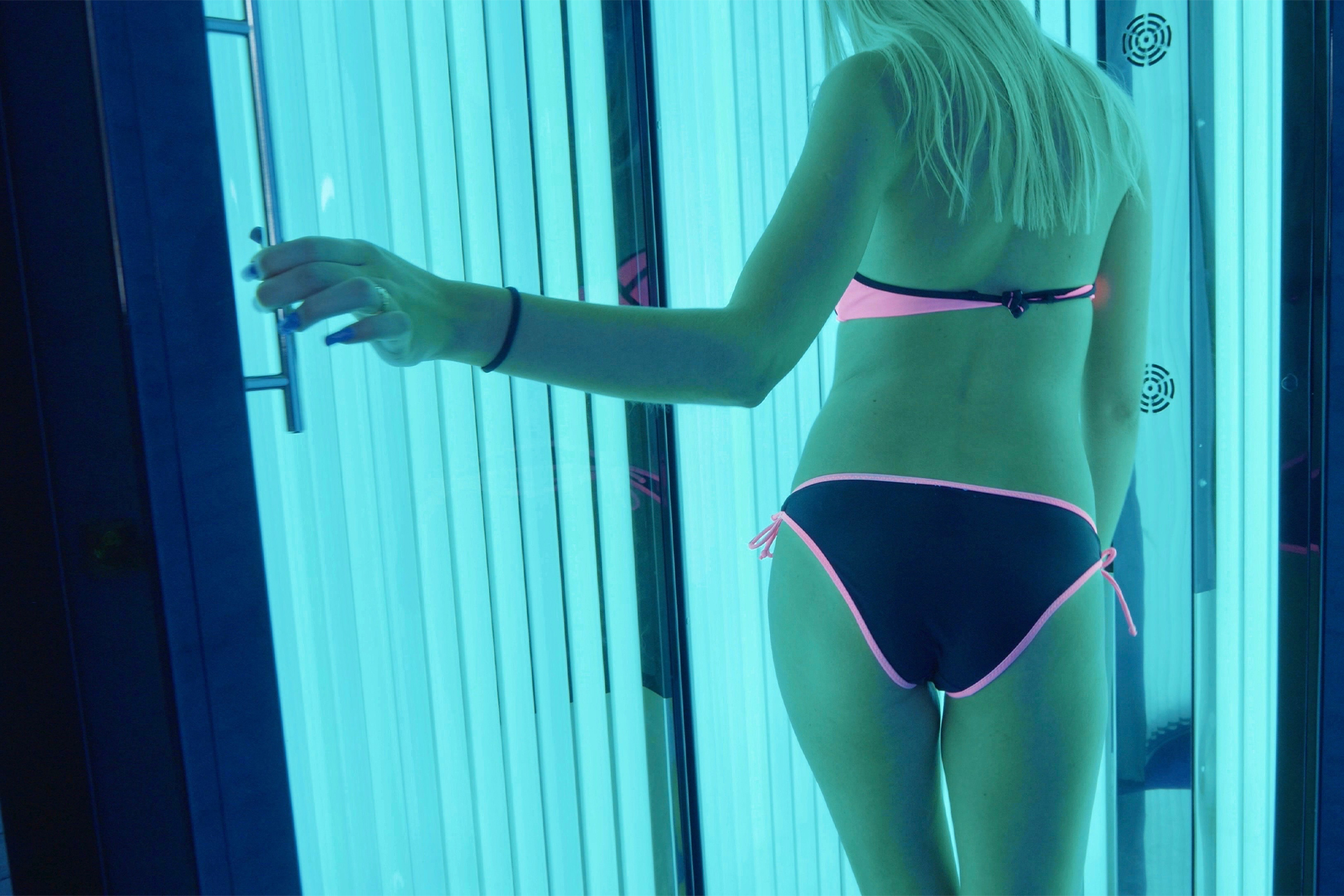While they say patience is a virtue, sometimes we’ve got deadlines to meet. Whether you’re hoping to get nice and tanned before a holiday or there’s a special occasion like a wedding around the corner, golden skin will keep you looking the part whilst giving you an injection of confidence. When you’re up against a specific timeframe, it’s important to ask yourself how long does it take to get a noticeable tan? After all, the answer will affect your planning.
For that reason exactly, we’ve put together this convenient guide to tanning – both the modern way, with sunbeds, and with the old-school method under the sun – so you can do so safely and enjoy the results just in time for your upcoming event.
How long does it take to get a suntan outside?
We hate to have to do this to you, but the time required to get a suntan can vary wildly depending on a whole heap of factors. It’s like asking, how long is a piece of string?
This said, though, people with more UV-sensitive skin may start to tan or even burn in as little as 10 minutes under the sun’s rays without sun protection such as SPF, a hat or long-sleeved clothing. Others will find that they can spend more time exposed to direct sunlight, not seeing a huge deal of difference.
Either way, with the appropriate level of sun protection, you can usually see yourself begin to tan in 1 to 2 hours in moderate sun and acquire a noticeable summery glow across several days of exposure.
What about sunbeds?
There are many methods of tanning, some more surprising than others. Sunbeds are an efficient way of doing so, whilst being in total control. Thanks to a wide variety of types and models, you can tailor your tanning regime down to the minute so you can gradually acclimatise the skin to UV exposure.
They work by stimulating melanin production in the skin, a pigment created to defend against sun damage, which creates an authentic, sun-kissed look. Achieving a noticeable difference in your tan may require 2-3 sessions if you don’t already have a light tan. But if you are already tanned, it may take 3-5 sessions to see a significant change and deepening of the shade.
As you might’ve already clocked, this is a brilliant option for the colder months when daylight hours are shorter and UV intensity meagre.
Are spray tans worth it?
Compared with sunbeds, spray tans are shorter-lasting and less natural in appearance. However, their main upside is that they offer an instantly bronzed appearance once applied and can be purchased and used at a very quick turnaround – just be prepared to clean up after the mess.
For those with more time at their disposal, it’s perhaps better to opt for a sunbed rental, knowing that you can gradually build up a realistic tan over time and benefit from a deeper, longer-lasting tan that will, in the long run, be more cost-effective than a spray salon trip.
Which method is better?
We’ve established that spray tans are a good option if time is of the essence and the most natural appearance isn’t a priority, but what about using tanning beds versus traditional sunbathing?
In both instances, you are using UV light to encourage melanin production in the skin. The main difference is that with sunbeds the UV light is artificial and that the UVA and UVB content will be slightly different. Thus, vitamin D production is something both methods share.
Where tanning beds stand out, however, are their benefits in terms of convenience and supply as you can use them all year round from the comfort of your own home. Either way, it’s a good idea to investigate the potential pros and cons of each method to make an informed decision.
5 factors impacting tanning time
As we mentioned earlier, there are many factors that influence how easily one can tan and the level of precaution they should take. These are broken down into 5 categories, which we discuss below.
1. Skin type
One of the most crucial elements of tanning to get right is understanding your skin type. This is because your genetic makeup will impact your approach to UV exposure and how frequently you can tan.
The medical community generally categorises people’s skin types using the Fitzpatrick scale. This scale charts 6 different skin types by their genetic disposition (physical characteristics like hair colour and freckles) and reaction to sun exposure.
Those who are tanning with fair skin – or type 2 on the Fitzpatrick scale – should take extra caution and limit their first session to a maximum of 3 minutes, whereas those with type 4 and 5 can extend their early sessions by a couple of minutes longer. It’s these higher numbers that will develop a tan more quickly, and people designated skin type 1 will struggle to tan at all without burning.
2. Exposure time
One of the most obvious correlations between a deeper tan is more frequent or longer exposure time. After all, the longer your skin absorbs the UV rays, the more time it has to produce melanin. This said, do remember that if you are just starting out using sunbeds you gradually build up to extended sessions.
3. UV intensity
UV intensity is another important factor that has an impact; the stronger it is, the deeper and faster you are likely to tan.
Tanning beds utilise fluorescent bulbs that primarily emit UVA radiation with smaller amounts of UVB. The intensity of UVA radiation can be up to three times greater than that of the sun, while the UVB intensity may also approach the levels found in bright sunlight.
This means that a controlled sunbed approach can help you achieve your desired results at a faster rate.
4. Climate and geography
Whilst we’re on the topic of UV intensity, it’s a good idea to bring up geography and climate. Why might you ask? Well, this is because the sun’s rays are more powerful at higher altitudes; more humid climates, with their increased moisture, discourage tans from fading; and the angle of the sun can contribute to the likelihood of tanning, particularly when you’re closer to the equator.
5. Sun protection
The Sun Protection Factor (SPF) of suncreams play a significant role in how your skin responds to sunlight. A higher SPF indicates an extended period before your skin begins to burn, whereas a lower SPF requires topping up more frequently.
How long will a tan last?
The effects of tanning bed sessions can typically last for around 2 weeks or even longer. However, this duration can vary based on how often you use the tanning bed and your individual skin type. A natural tan will also last around the 2-week mark, averaging around 7-10 days.
Some words of wisdom on tanning safely
Remember to set a timer to avoid prolonged exposure to UV light, whether it’s from sunbathing outdoors or in a tanning bed. Your body stops producing melanin after a certain time, so too much sun exposure may cause skin damage instead of a tan.
Also, don’t forget to wear sunglasses and a sunhat! Sunglasses protect your eyes from UV damage, while a sunhat shields your scalp from sunburn. These accessories are not only stylish but also a must-have for safe sunbathing.
A recap on the bronzing process: How long does it take to get a tan?
So, how long does it take to get a tan? Well, achieving that coveted tan can vary depending on the method you choose and your individual factors. If you’re opting for natural sun exposure, remember that the time required to see a noticeable tan can differ widely based on your skin type, exposure time, and UV intensity. Generally, with consistent and safe sun exposure, you can start seeing results within a few hours to days.
For those leaning towards sunbeds, you might notice a difference after 2-3 sessions if starting from a light base, or 3-5 sessions for a deeper tan. Sunbeds offer the advantage of controlled exposure, making them a viable option, especially during the colder months when natural sunlight is less intense.
Ultimately, the best method depends on your timeline, skin type, and preference. Regardless of the approach, always prioritise skin safety by using sun protection, avoiding excessive exposure, and listening to your body’s signals.



